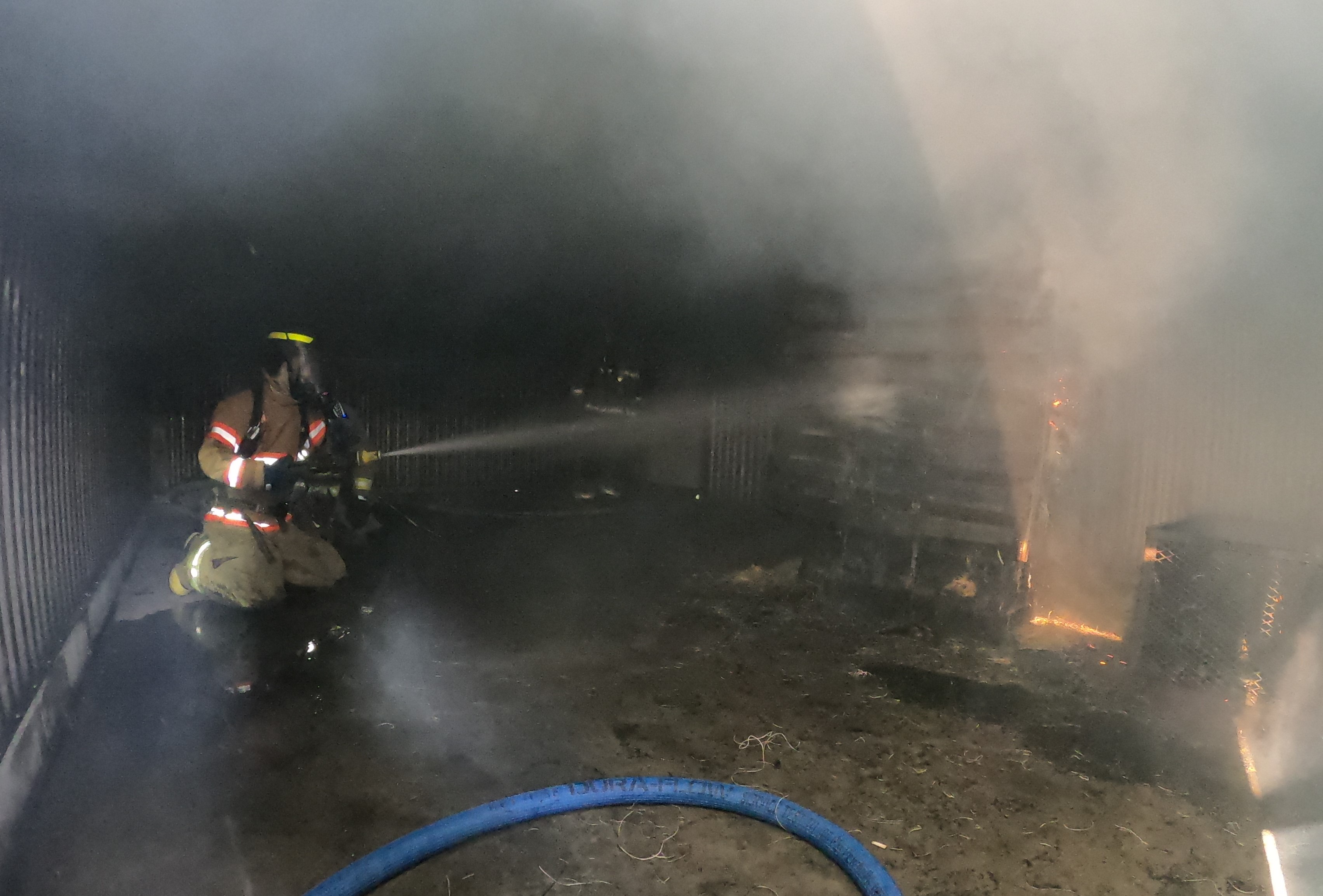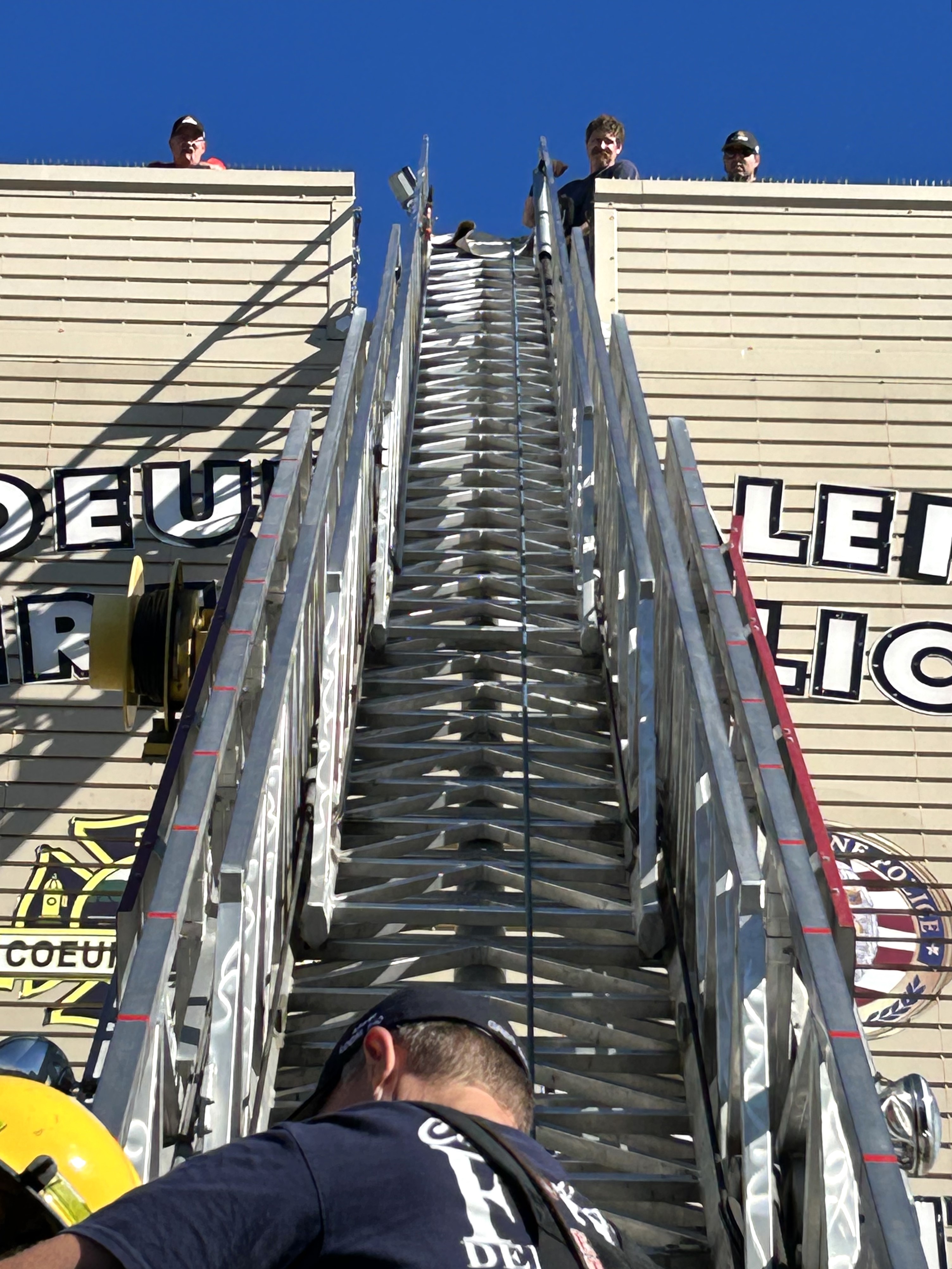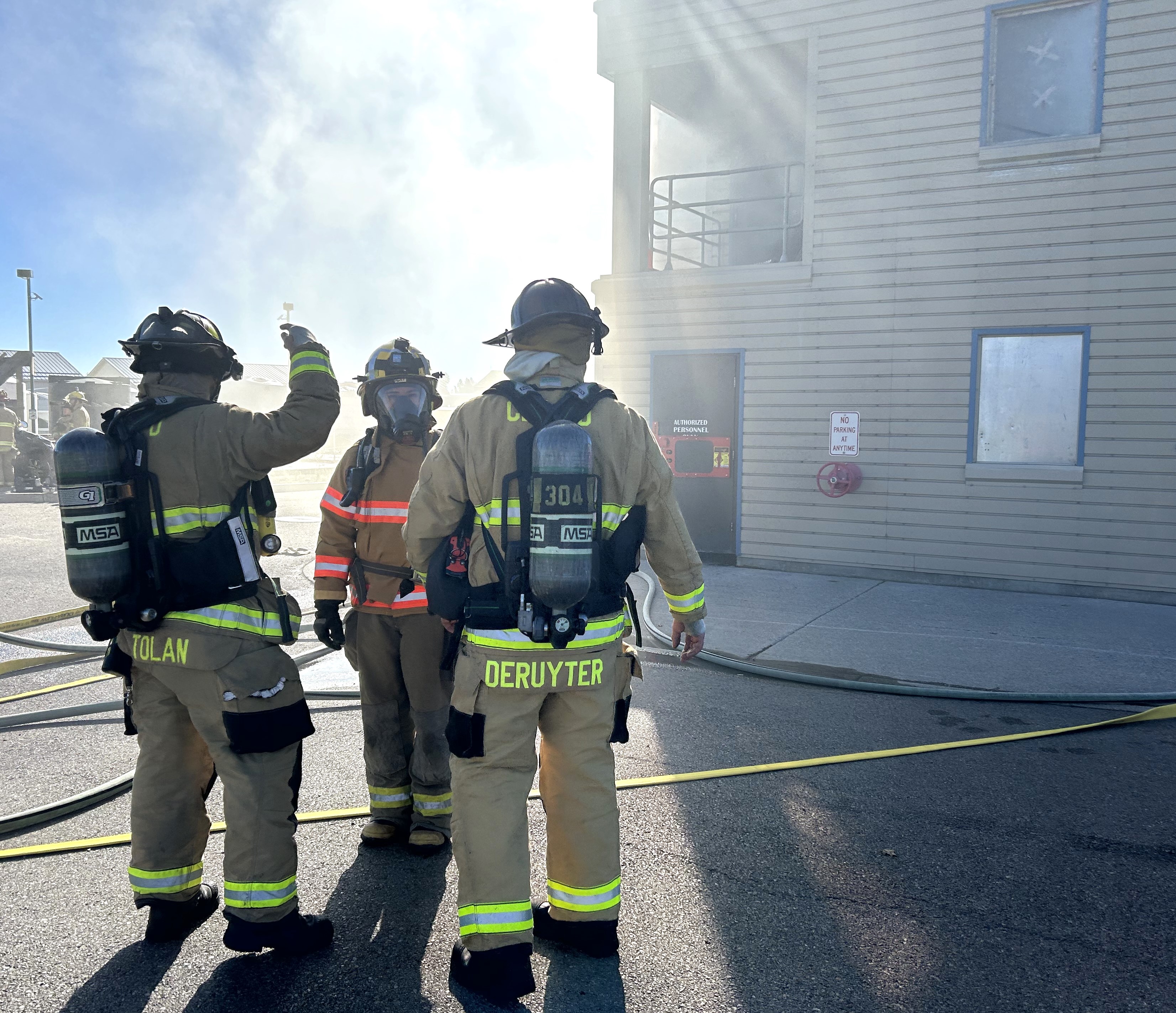Beyond the flames
COEUR d’ALENE - It’s called the “confidence burn.” The idea is to give you a feel for what it’s like to face flames, smoke and heat while wearing a firefighter’s gear.
But it’s not giving me confidence.
Thick, gray smoke is filling the enclosed room, where a fire burns. I’m down low, on my knees, away from the wall, as instructed, and I can’t see the other 10 or so people with me.
The air mask on my face suddenly feels very claustrophobic. The air I’m breathing from the oxygen tank is getting hotter and I’m wondering if that’s normal, but then Coeur d’Alene Fire Department Capt. Bill Deruyter says it’s more than 400 degrees in the room, so yes, hot air would be normal.
I’m starting to question how much longer we’re going to be in here. I’m on the edge of ripping off my air mask and running for safety outside, when the fire is put out by blasts of water and the door slides opens.
“We want you to get a good sense of the heat, get used to being in gear with a fire,” Deruyter says. “It breaks those nerves, if you will.”
I recently joined a few other media representatives for “Fire Ops 2023" with the Coeur d’Alene Fire Department.
The event was a chance for the media to enter the world of firefighting and emergency medical response. It was last held in 2017.
Participants engaged in a practice burn, responded to a mock medical call, and gained firsthand experience in the fundamentals of firefighting.
“We hope this experience will help participants get a better understanding of what happens on a fire scene and help them when reporting on fire incidents,” wrote Erik Loney, Coeur d’Alene firefighter/paramedic.
But there’s another goal, as well.
“The event also hopes to foster a deeper understanding in the challenges faced by our firefighters on a daily basis and highlight the importance of their roles in ensuring community safety,” Loney wrote.
In six hours of training with firefighters, media folks entered a building full of smoke, unable to see more than a few inches, crawled up stairs, along a wall and searched a room with a crib and bunk beds as they tried to find any victims.
Later, we crawled through smoke and down a hallway while pulling a heavy fire hose to knock down a fire in a back room.
Next, we wielded the Jaws of Life and spread open a vehicle door and cut away another to save victims in a crash scenario.
Then, we practiced CPR as we tried to revive an unconscious person.
Finally, we got a chance to scale a ladder, some 50 feet up.
We did much of this while wearing full firefighter’s gear with an oxygen tank that in total weighed some 50 pounds.
Before we entered the smoke-filled building, Deruyter warned us not to dive out a second-floor window if we panicked and not to open a locked rollup door.
“Don’t try to unlock it and go in because that is an elevator shaft and you will go all the way down to the basement,” he said.
In case you’re wondering, we weren't on our own. I was shadowed throughout the day by seven-year firefighter Justin Torfin, who made sure I didn’t get into trouble or do anything foolish.
“Your shadow will keep you out of danger,” Deruyter said.
I asked Torfin what was the main message he wanted to send.
"I hope you understand what it takes," he said. "Sometimes the perception is there are a lot of guys on scene, not everybody is working, but there's a ton of stuff that goes on.”
Media learned a few things.
Firefighting is strenuous and physically demanding. That's why firefighters will rotate in and out of structures when battling a blaze.
Entering a burning building full of smoke, uncertain of the layout or what you’ll find, takes courage and smarts. Mix in manning a fire hose, breaking through walls and ceilings. It all takes endurance and strength.
The Jaws of Life, cutters and spreaders, must weigh 50 pounds each. They are difficult to master.
Performing CPR demands knowledge and passion.
That's just the general picture of firefighters and what they do. Then there's the behind-the-scenes training and responsibilities so they can answer the call that few know about or understand.
It's not quite like the movies where firefighters roll up in fire trucks, sirens screaming, save the day, then go home and wait to do it all over again.
It can take a few minutes to knock down a fire, but a lifetime to prepare for it.
Sometimes, dousing the flames is the easy part. Next comes shoveling insulation, clearing Sheetrock, and punching through walls and ceilings to be sure the fire is out.
“It takes a lot of people to run an effective fire organization," Torfin said.
When firefighters respond, their first priority is rescue. Second, put out the fire. Third, keep it from spreading. Fourth, property conservation.
“One of the best ways we can save people is by putting the fire out," said Fire Marshal Craig Etherton.
There is a strong sense of camaraderie and teamwork with firefighters. They essentially live together for long stretches and become family.
They are an encouraging, humorous bunch, too. Several times firefighters sensed my apprehension, particularly my fears my air mask would fill with smoke, and assured me I was fine.
"We'll take care of you," I was told.
Fire Chief Tom Greif stopped in and gave brief talk. He summed things up with a few words: “I’m impartial, but this is the greatest profession there is."
 A media member sprays water on a fire during “Fire Ops 202"3 with the Coeur d’Alene Fire Department.
A media member sprays water on a fire during “Fire Ops 202"3 with the Coeur d’Alene Fire Department.  Bill Deruyter, left, Scott Robinson, center, and Darren Tolan, all with the Coeur d'Alene Fire Department, look down as Greg Rod prepares a media member to climb the ladder during “Fire Ops 2023."
Bill Deruyter, left, Scott Robinson, center, and Darren Tolan, all with the Coeur d'Alene Fire Department, look down as Greg Rod prepares a media member to climb the ladder during “Fire Ops 2023."  Coeur d'Alene firefighters talk to a media member before entering a smoke-filled building during “Fire Ops 2023" with the Coeur d’Alene Fire Department.
Coeur d'Alene firefighters talk to a media member before entering a smoke-filled building during “Fire Ops 2023" with the Coeur d’Alene Fire Department. 



